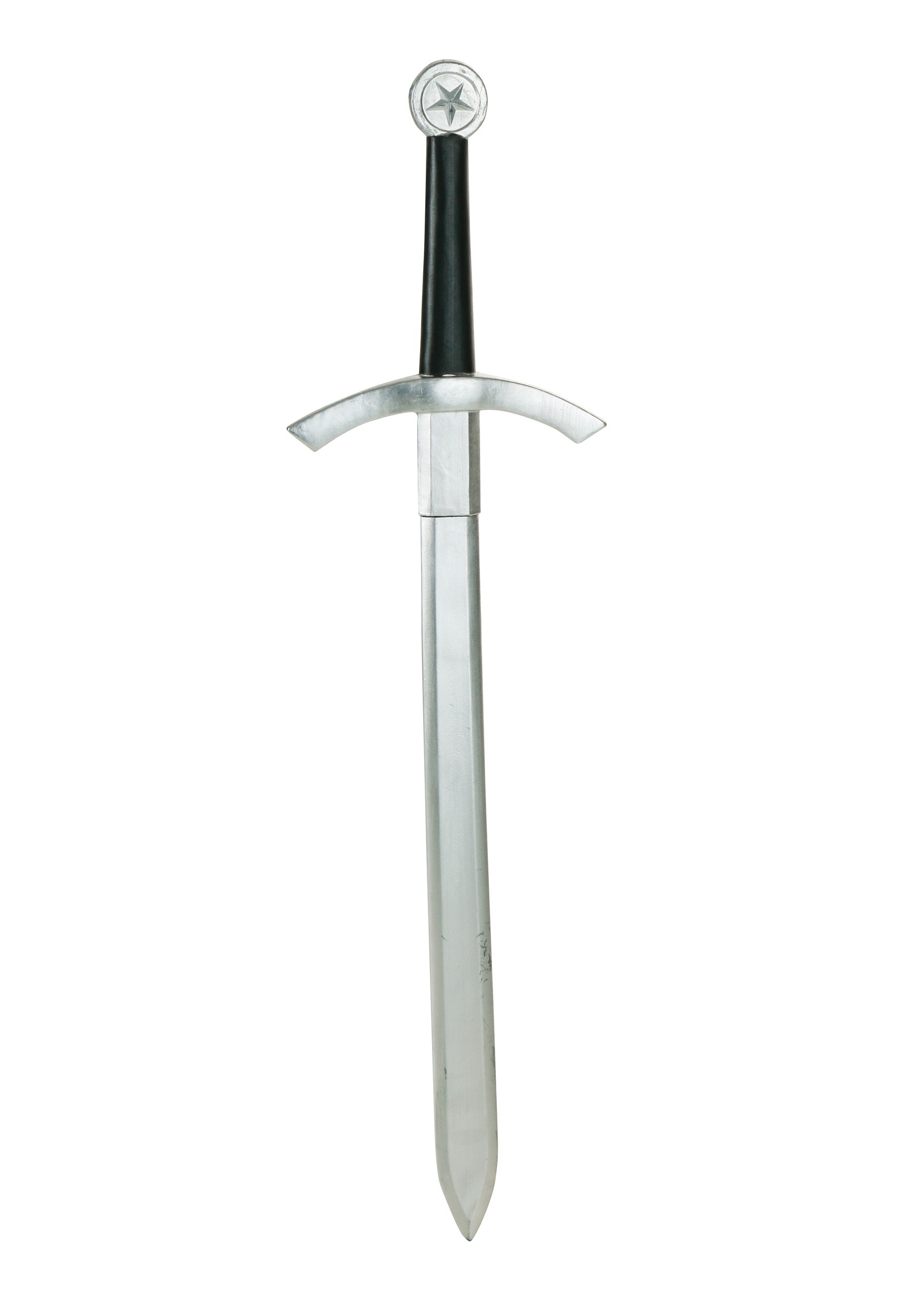
Broadswords possess a double-edged blade. The basket-hilted sword was a military sword in the main but also used by civilians in medieval periods civilian contexts. In modern times, this kind of sword could be labeled as a broadsword. The basket-hilted sword is a Late Middle Ages sword of the early modern period. The Claymore sword would have been a frightening presence on the battlefield and could inflict great injury and could easily cut off limbs such was the power that could be generated by the strong Highlanders with this two-handed sword. There are many different versions of the Claymore sword which originate from Scotland. The Claymore sword was used without a shield as it would be very hard to hold with one hand due to the size and weight, two hands were needed to hold the Claymore sword and the main thing that distinguished it from other medieval swords was its sloped style hilt, that is unique. This Great Sword was used by Scottish Highland warriors, it is a huge sword that must have been a scary sight on the battlefield and is about 55 inches in length. The Claymore Sword is a Scottish sword with a Broadsword used by Scottish mercenaries in the late medieval period the name Claymore sword means the “Great Sword” and this term is derived from the early Gaelic language. The blade length of the bastard sword could vary in length, it could be short or long, but the main thing was that the handle grip was long enough so that medieval military men could get two hands around the handle of the Sword.Ĭlaymore Sword – Medieval Swords (1) *Broadsword The bastard sword is the English pronunciation of the French name for the Sword épée bâtarde – it describes a hand and a half Sword that was commonly known as a longsword in medieval times. The Bastard Sword épée bâtarde * 1350 Late Medieval Period Zweihander Sword *German meaning two-handed large sword that could only be used with two hands. Ulfberht Sword * German sword used in the Germanic period from the 8th to the 11th century. Short Sword *General term to group together most short swords from the medieval period and beyond. Scimitar Sword *Fighting sword used by Saracens and in the crusades, it has a steep curve. Long Sword *Two-handled long sword straight double-edged blade used in medieval times and the renaissance. Great Sword *A variety of long swords fit this description used from medieval times and the renaissance. Knightly Sword -*Arming Swords * Knightly Arming Sword – Light sword of the High Middle Ages.īastard Sword*French description, a general term for a large sword of uncertain origins the épée bâtarde.īaton Sword*Early sword used as a training sword in medieval tournaments, wood or whalebone.īroadswordor Basket-hilted sword *Early Modern longsword that had a metal basket design to protect the hand.Ĭlaymore Sword *A two-handed long sword popular in Scotland with forward sloping quillons.įalchion Sword *Curved shape European one-handed fighting sword with a single edge. It eventually became the key weapon of the knights in different European territories. This type of sword was already used in regions of Europe by the 10th century and by the 11th century, it had reached most of Europe through Norman armies. Kings and Nobles would decorate their swords will silver, gold, and other expensive materials. The knightly sword which came to be used in early medieval Europe was typically double-edged and straight with a blade that measured somewhere between 70 and 80 centimeters. The spathe sword, in turn, came all the way back from the Roman days. This type of sword was directly descended from the spathe which was wielded by the Germanic peoples since pre-medieval times. The knightly sword in Europe developed near the later part of the early medieval period and was the favorite weapon of the Medieval Knight! Medieval warfare historians also describe the sword as being the favorite weapon of the Vikings!


Knightly Sword *Arming Sword * K nightly Arming Sword These longswords were fairly heavy and were used to slash and cut with heavy downwards strokes rather than used to pierce the enemies’ armor.Īnglo Saxon warriors treasured their swords highly and the swords would pass from one generation to another, often with inscribed hilts, gilded pommels, and other decorative signs which identified the noble owning the sword. Typically, Anglo Saxon swords ran the length of nearly 37 inches. Swords were often unsheathed and used only when an enemy was already wounded. Although the Anglo Saxons fought mostly with spears, the most notable warriors or the leading noblemen wielded richly decorated swords. Swords were a highly treasured piece of weaponry among the Anglo-Saxon military. Collection of rare original Viking Swords Anglo Saxon Swords


 0 kommentar(er)
0 kommentar(er)
